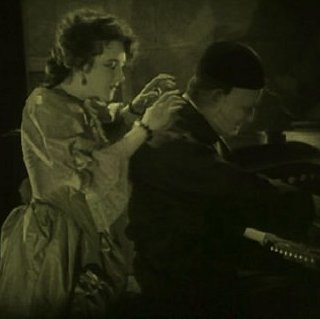
"The 1925 silent film version of The Phantom of the Opera, directed by Rupert Julian, is a classic adaptation of the novel by Gaston Leroux. It stars Lon Chaney in the title role as the masked and facially disfigured 'Phantom'. It is a masterpiece of horror that shocked cinema for decades.
This grand atmospheric melodrama with it’s balance of terror and tragedy provides a perfect vehicle for the dark ambient jazz soundscapes of Cipher who premiered their live score to the film at the Bradford International Film Festival 2008 and then toured it around cinemas in the UK
During the latter decades of the Victorian Era, the great Paris Opera is troubled with whispers of a ghost--a frightening specter which visits misfortune on the company should they fail to please him. Up-and-coming singer Christine Daae (Mary Philbin), meanwhile, is more preoccupied with her singing tutor--a disembodied voice she believes to be an emissary from her dead father, who guides her to new heights but demands she put her music above all else, including and especially her handsome childhood sweetheart Raoul (Norman Kerry). Neither Phantom nor tutor is a spirit in truth, but are two different sides of the same man--a horribly disfigured, unnaturally gifted, and frighteningly passionate man, but a man nonetheless. The film is most famous for Lon Chaney's intentionally horrific, self-applied make-up, which was kept a studio secret until the film's premiere.
The impressive sets of the Paris Opera House and the catacombs, the color footage, and the lavish costuming all add to the atmosphere of the film, yet they pale next to Chaney's performance. This was truly the masterpiece of Chaney's career and ranks as one of the greatest tour-de-force performances of the silent era.
Jon C. Mirsalis. Sandman Magazine
Tonight the showroom plays host to only the second ever performance by Cipher of their new score to the silent classic Phantom of the Opera, which was originally released in 1925. The film itself should need no introduction, so shame on you if you don’t know that it’s a masterpiece of horror that shocked cinema audiences for decades and still has genuinely startling scenes, even when viewed today. Lon Chaney is the iconic, facially disfigured ‘Phantom’, whose self applied make-up was kept a studio secret until the film’s premier. Cipher, consisting of Dave Sturt and Theo Travis, have been developing film scores for over 10 years. They use a baffling array of digital sound processing equipment, along side more traditional instruments, such as flutes, clarinets and electric fretless bass guitar. All this is performed live to accompany the film and often you forget their presence, as images and sounds seamlessly become one. Ambient jazz is a phrase often used to describe their sound and it does have an element of free-form and improvisation, but often has a darker edge to it and when needed manages to conjure up some very menacing moods. Sometimes it is an electronic sound wash with percussive counterpoints, at other times flutes and bass create an ambient groove which draws you in and adds to the film’s relentless pace and sense of drama. Separating their musical contribution from the film is impossible and would be pointless. The two must be experienced together and live for it to mean anything. Fortunately for anyone who missed it, there are opportunities still to see them when they play cinemas in Leeds and Nottingham in May. A truly unique evening and one which fans of live music should not miss.
Vivian Bonzo
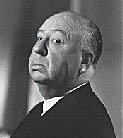
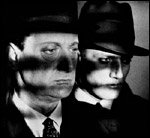
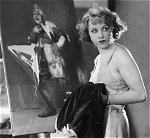
Blackmail
Directed by Alfred Hitchcock in 1929, is the director's last and greatest silent film. This gripping tale traces the actions of a young British woman and her detective boyfriend. The pair's actions quickly spiral out of control. This is Hitchcock at his best and, with the help of Cipher, a powerful evening of sound and vision.
Conceived and shot in 1928, Blackmail was the first sound film to be produced in Britain. While Blackmail was originally shot as a silent film, Hitchcock was interested in the new sound technology and re-shot numerous scenes, dubbed the dialogue and ultimately produced a second version of Blackmail. For these screenings, Cipher presents the rarer, silent version of the Hitchcock's masterpiece, which is believed to be the best version.
F.W. Murnau's The Last Laugh (Der letzte Mann) 1924.
SEE REAL MEDIA CLIP (real player required to play video clips)

Murnau's silent film The Last Laugh tells the tragic story of a self-confident hotel porter, brilliantly portrayed by Emil Jannings, who is demoted to lavatory attendant. The porter's entire identity is based upon his position and especially on his uniform, which symbolizes power and respectability to his lower-middle-class community of family and friends. The film's most shocking and brutal moment comes when the hotel manager unrelentingly strips the pleading porter of his uniform; it is as if the porter's skin were being ripped off. But this is only the beginning of his trials. The film's unexpected deus-ex-machina ending tries to whitewash the porter's suffering, but his tragic decline remains unforgettable.
Dispensing with the customary intertitles, and filming while moving the camera in extraordinarily inventive ways, Murnau and his cinematographer, Karl Freund, transformed the language of film. In shooting the opening sequence, the camera descended in the hotel's glass elevator and was then carried on a bicycle through the lobby. In addition, The Last Laugh succeeds in combining expressionist elements, such as extreme camera angles, distorted dream imagery, and disturbing light and shadow effects, with a complex psychological study of the main character in his fall from privilege.
Financial assistance from Arts Council East Midlands
Alfred Hitchcock - The Lodger 1926 classic featuring Ivor Novello.
SEE REAL MEDIA CLIP
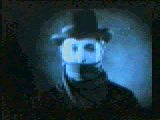
Alfred Hitchcock - Blackmail 1929 a film of which a silent and a sound version exists. More murder and intrigue set in London. A famous chase scene in the British Library finishes this classic.
Karl Valentin - The Mysteries of the Hairdressers Salon 1922 . Karl Valentin was a peer of Charles Chaplin and a stage and music hall comedian who transferred to the screen to a mixed reception. His films are humorous but with a strange and almost gothic element, for example in the Mysteries of the Hairdresser's Salon the hairdresser accidentally cuts off the head of one of his customers. The head subsequently shuffles away before eventually being found and reattached its body!
Karl Valentin - The New Desk 1915. A ten minute short of a hilarious music hall sketch translated to celluloid.
G.W.Pabst - Pandora's Box 1929.
SEE REAL MEDIA CLIP

Voted one of the greatest silents of all time in a Time Out poll, as a study of amoral eroticism, obsession and despair, G W Pabst's silent masterpiece is second to none. An adaptation of two plays by German playwright Frank Wedekind, Pandora's Box deals with the tale of Lulu, high-class prostitute and mistress of a well-known local businessman. Lulu's insatiable sexual desires and disregard for traditional morality results in a string of death, envy, greed and despair, culminating in her own death at the hands of Jack the Ripper. Scandalous at the time, the tale is still powerful, and as a comment on the decay of German society at the end of the 1920s it is very strong indeed.
What makes Pandora's Box even more notable however is its main star. Lulu is played by silent screen legend Louise Brooks, the beautiful and mesmeric star that defined the look of the era. Brooks represents unrelenting and unremorseful sensuality, easily becoming the screen's first truly empowered woman. From the sharp bob of her raven black hair to the pointiness of her lipliner to the devilish sparkle in her eye, Brooks lights up the screen every moment she's on it. No-one in the film is immune to her charms: even the prosecution lawyer demanding her death is affected by her medusa-like gaze for a moment. Wrapping men and - in a notorious yet elegantly shot scene - women around her finger as though toying with some lesser species, Lulu uses those she meets for her own pleasure and satisfaction, leaving hollow shells of people behind in her wake. By the end of the film, she has put so much into the character of Lulu that her death becomes something intensely moving and sad, especially given the violence of its fashion. The final scenes of Pandora's Box are some of the most intense and erotic ever filmed, as we see Lulu unwittingly invite her killer into her room, embracing him as she embraces her end.
Performance reviews -
"Earthy-ethereal electro-jazz combo Cipher recently scored Hitchcock's "The Lodger". It gave them the taste for sound/image exploration. Now they've turned their distinctive sonic attentions to the absurdist gothic of pioneering Munich comedian Karl Valentin. Making music for little seen shorts from 1914 to 1936, Cipher offer an intriguing evening in the company of a maverick celluloid maestro."
Time Out (London)
When Brian Eno invented the notion of ambient music , one of his first
projects was called "Music for Films". That the films didn't actually exist
was neither here not there at the time, but it was inevitable that someone
would eventually tie floating loops of ambience to real celluloid artworks,
and chilled-out Vjs notwithstanding, some respect must be due to saxophone
master Theo Travis for that one. Cipher is a duo of Theo and fretless bass
player/ sample wizard Dave Sturt, formed in 1996 for a specially
commissioned live soundtrack to Hitchcock's silent classic "The Lodger".
The result caused such a stir that the twosome went on to record albums
("No Ordinary Man" and "One who Whispers"), while touring the music. But
the connection with films remained close to the heart of the Cipher project
– it just needed the right film, and they found it. "Pandora's Box" is
German expressionist G.W.Pabst's silent masterpiece, starring Louise Brooks
as Lulu and using the Jack the Ripper story as metaphor for the decadence
of German society at the dawn of the 30s. It's a fine piece of cinema and
some challenge to the dynamic duo to make a soundtrack that actually
enhanced the watching of it. But by all accounts they've succeeded
admirably, making an experience that is truly greater than the sum of its
excellent parts.
Venue Magazine
So - are we here to hear the film or watch the music? Ambient duo Cipher
(plus a bank of electronica) will perform a soundtrack to G.W.Pabst's
expressionist silent film Pandora's Box, a shocking (for the 1920s) tale of
Lulu whose thoughtless exploitation of her sexual hold over a string of
stupid men leads to ruin and death. The musicians (Theo Travis, sax & Dave
Sturt, bass) sit demurely to one side, pushing the occasional button or
pedal and starting a soundwash that ushers in the credits. This is a tricky
thing to review because the film - Pabst's pre-noir shadow play, dominated
by the iconic Louise Brookes' haircut - is a big distraction, and didn't
Brian Eno used to say that ambient music should be invisible, anyway? In
this respect, Cipher succeed, because for long stretches I have to remind
myself to listen. The mix of bass lines, samples and soprano sax seem
inextricable from the flickering images and mostly they don't try to make
the sound fit so much as complement the mood. Listening to their excellent
CD 'One Who Whispers' it's easier to appreciate the architecture of what
they do, but here they vanish - and that's the enigmatic triumph, I
suppose, of the ambient idea.
Bath University Arts Theatre (7 March 2003) – Venue Magazine
Cipher's music to Pandora's Box is truly excellent........ as well as
lending a greater continuity to the film, the wonderfully sensual score
provided an aural counterpoint to Louise Brook's stunning performance as
Lulu......... By providing a suitably nuanced score to this drama, Cipher
pay tribute to a great actress and a great film.
BBC. (Coventry and Warwickshire Website – Films page)
For bookings and further information :



